The Circus
The Hagenbeck-Wallace Circus was a circus that traveled across America in the early part of the 20th century. At its peak, it was one of the largest in America.
The circus began as the “Carl Hagenbeck Circus” by Carl Hagenbeck (1844–1913), an animal trainer who pioneered the use of rewards-based animal training as opposed to fear-based training. In 1907, a man named Benjamin Wallace, a livery stable owner and a circus owner from Peru, Indiana, purchased the Carl Hagenbeck Circus and merged it with his. The circus became known as the Hagenbeck-Wallace Circus at that time.
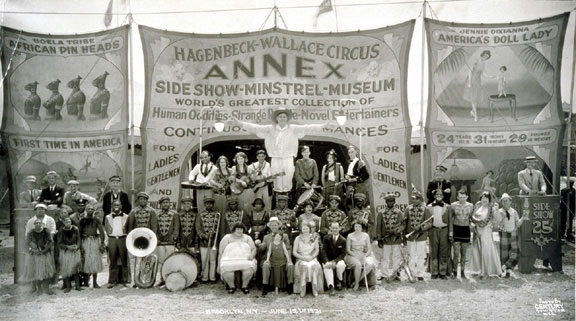
The Tragedy
The Hammond Circus Train Wreck was one of the worst train wrecks in US history. In June, 1918, eighty-six people were reported to have died and another 127 were injured when a locomotive engineer fell asleep and ran his train into the rear of another near Hammond, Indiana.
In the early morning hours of June 22, 1918, Alonzo Sargent, an engineer for 16 years, was operating a Michigan Central Railroad troop train pulling 20 empty Pullman cars. He was aware that his train was closely following a slower circus train. Sargent had slept little, if at all, in the preceding 24 hours. The effects of a lack of sleep, several heavy meals, some kidney pills, and the gentle rolling of his locomotive are thought to have caused him to fall asleep at the controls.
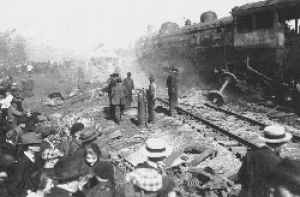
At 4:00 am, he missed at least two automatic signals and warnings posted by a brakeman of the 26-car circus train, which had made an emergency stop to check a hot box on one of the flatcars. The second train plowed into the caboose and four rear wooden sleeping cars of the circus train at a rail crossing known as Ivanhoe Interlocking at an estimated speed of 35 miles per hour.

The circus train held 400 performers and roustabouts of the Hagenbeck-Wallace circus. The circus traveled with about 50 cars, in two sets and most of the performers and crew had been asleep in the second set.
Many died during the initial collision and most of the performers perished within the first 30 seconds of the wreck. A fire broke out from the kerosene lamps, which were used for lighting in the sleeping cars of the circus train. The fire quickly spread through the wood-constructed cars. As a result of the collision and subsequent fire, 86 persons died and another 127 were injured.
An Interstate Commerce Commission (ICC) report following an investigation concluded:
“This accident was caused by Engineman Sargent being asleep, and from this cause, failing to observe the stop indication of automatic signal 2581, and the warnings of the flagman of the circus train, and to be governed by them.“
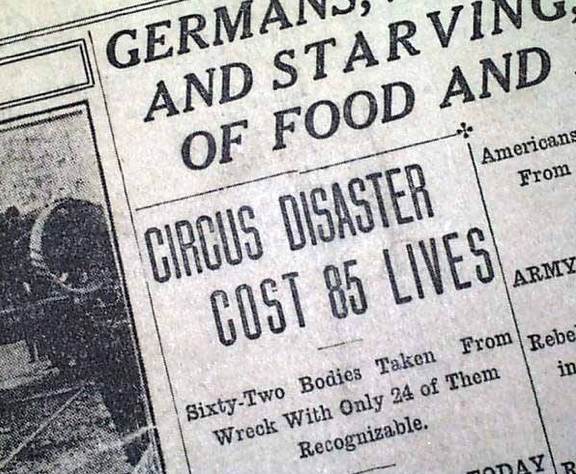
The Graveyard
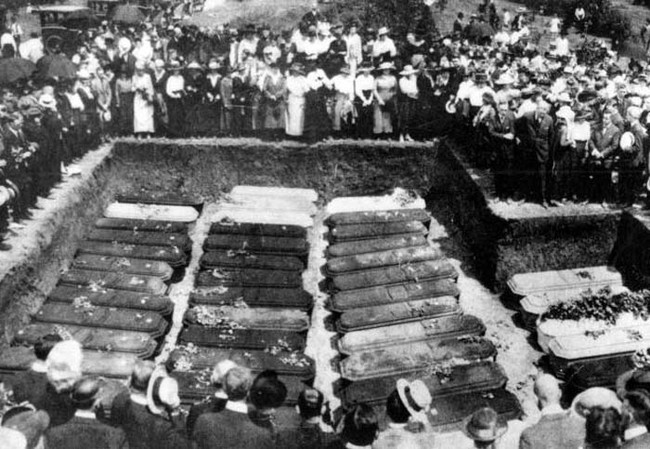
Five days later, most of those killed, burned beyond recognition, were buried in Woodlawn Cemetery, at the intersection of Cermak Road and Des Plaines Avenue in Forest Park, Illinois, in a section set aside as Showmen’s Rest, which had been purchased by the Showmen’s League of America only a few months earlier.
Few of those buried were formally identified, and so the graves of most of the casualties are marked “Unknown Male” or “Unknown Female.” One grave is marked “Smiley”, one “Baldy”, and another “4 Horse Driver”. The section is surrounded by statues of elephants in a symbolic mourning posture.
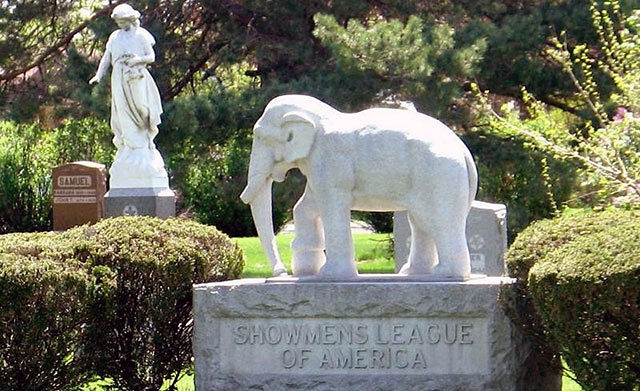
Today, original circus wagons from the Hagenbeck-Wallace Circus can be seen at Circus World in Baraboo, Wisconsin. Their winter headquarters in Peru, Indiana is now the International Circus Hall of Fame.